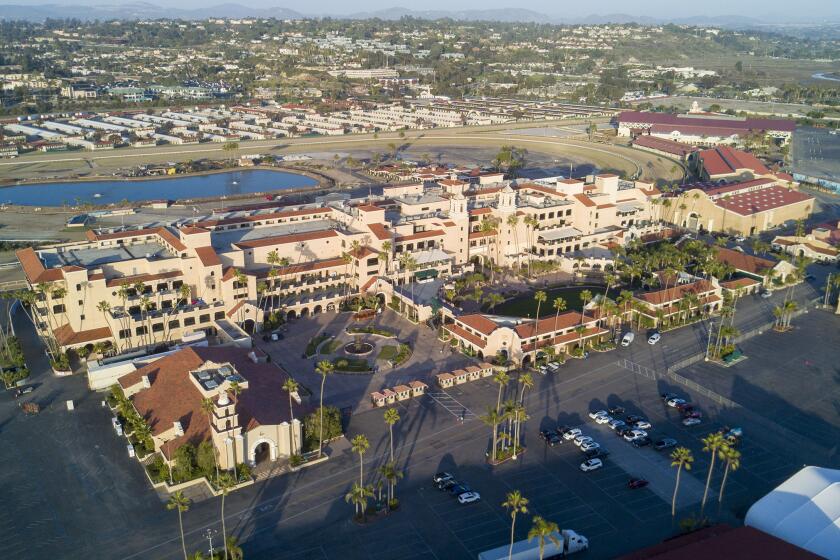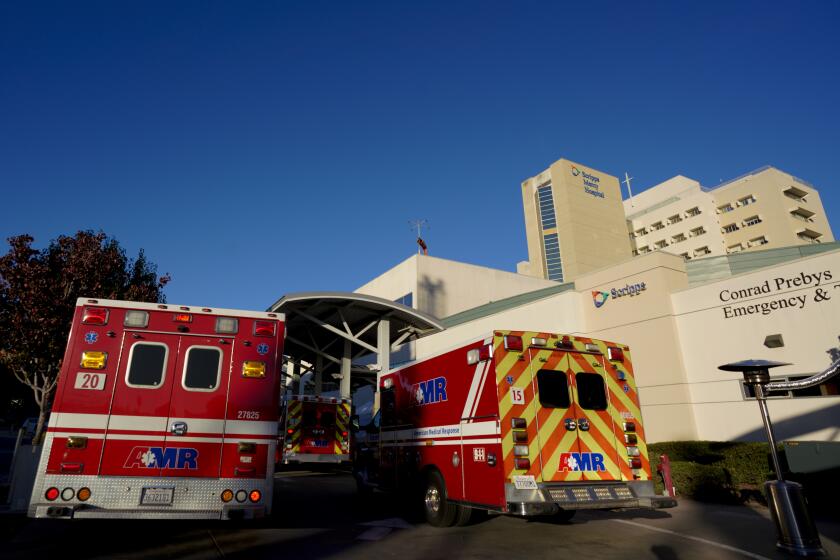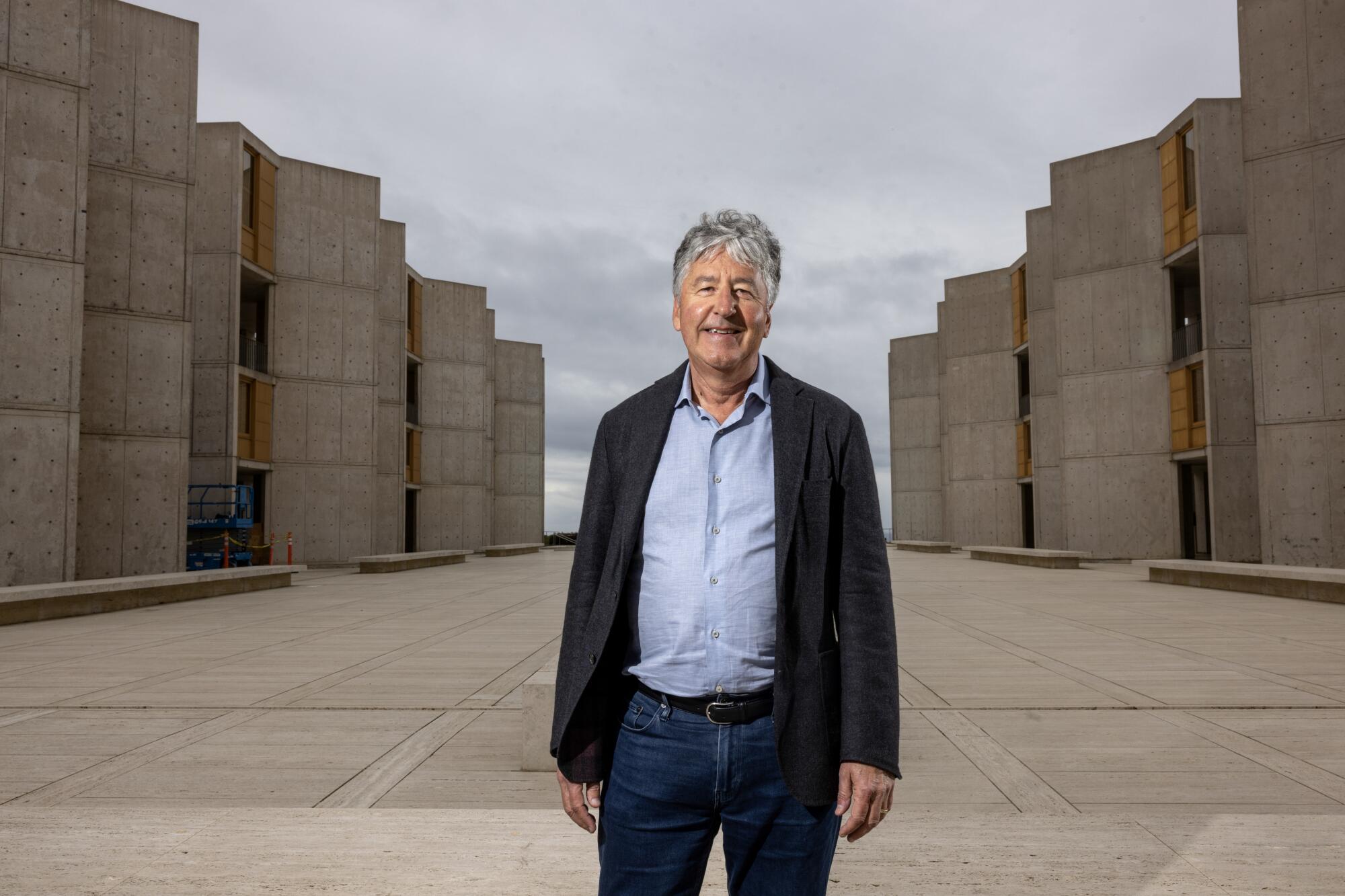
- Share via
SAN DIEGO — One of the nation’s top experts on how disease arises in humans has been appointed the new president of the Salk Institute in La Jolla, which is undergoing a historic expansion that’s meant to help scientists demystify such diverse conditions as cancer and dementia.
Gerald Joyce, the institute’s chief science officer, will replace geneticist Rusty Gage, who is returning to the lab after greatly improving the Salk’s financial health and calming faculty unrest tied to allegations of gender discrimination.
This story is for subscribers
We offer subscribers exclusive access to our best journalism.
Thank you for your support.
The institute’s trustees said the 66-year-old biochemist is the perfect choice for the job because he has deep experience in basic research and drug discovery, as well as a gift for raising money and recruiting talent in the country’s brutally competitive, ever-growing life sciences industry.
He has “deep shoes to fill in following Rusty, but he’s so well positioned for this, and he’s incredibly thoughtful and personable,” said Qualcomm co-founder Irwin Jacobs, a member of the institute’s board of trustees and a major donor.
The appointment comes at a pivotal moment in the 63-year history of the Salk, which bears the name of the late Jonas Salk, who developed the first effective, widely used vaccine against the polio virus.
Joyce told the Union-Tribune that the Salk has scrapped plans to try to raise $500 million over a five-year period and will now seek $750 million over seven years, concluding the campaign in 2028.
About $250 million of that money will be used to build and operate a major science and technology center on North Torrey Pines Road, where science institutes, companies and UC San Diego are growing so fast. there never seems to be room enough for all the people and equipment.
The remaining millions will be used to do such things as increase the size of the faculty by about 10, pushing it to 60, and deepening the work the Salk does in cancer, aging, neurodegenerative diseases and plant biology.
The Salk is a comparatively small institute but has regularly been ranked among the best life science centers in the country, lifted by such star researchers as Joanne Chory and Ron Evans, as well as Tony Hunter, whose research helped lead to the successful cancer drug Gleevec.
The Salk will do all this while remaining focused on basic research, rather than mimicking other biomedical centers that have expanded into the costly world of drug discovery and clinical trials.
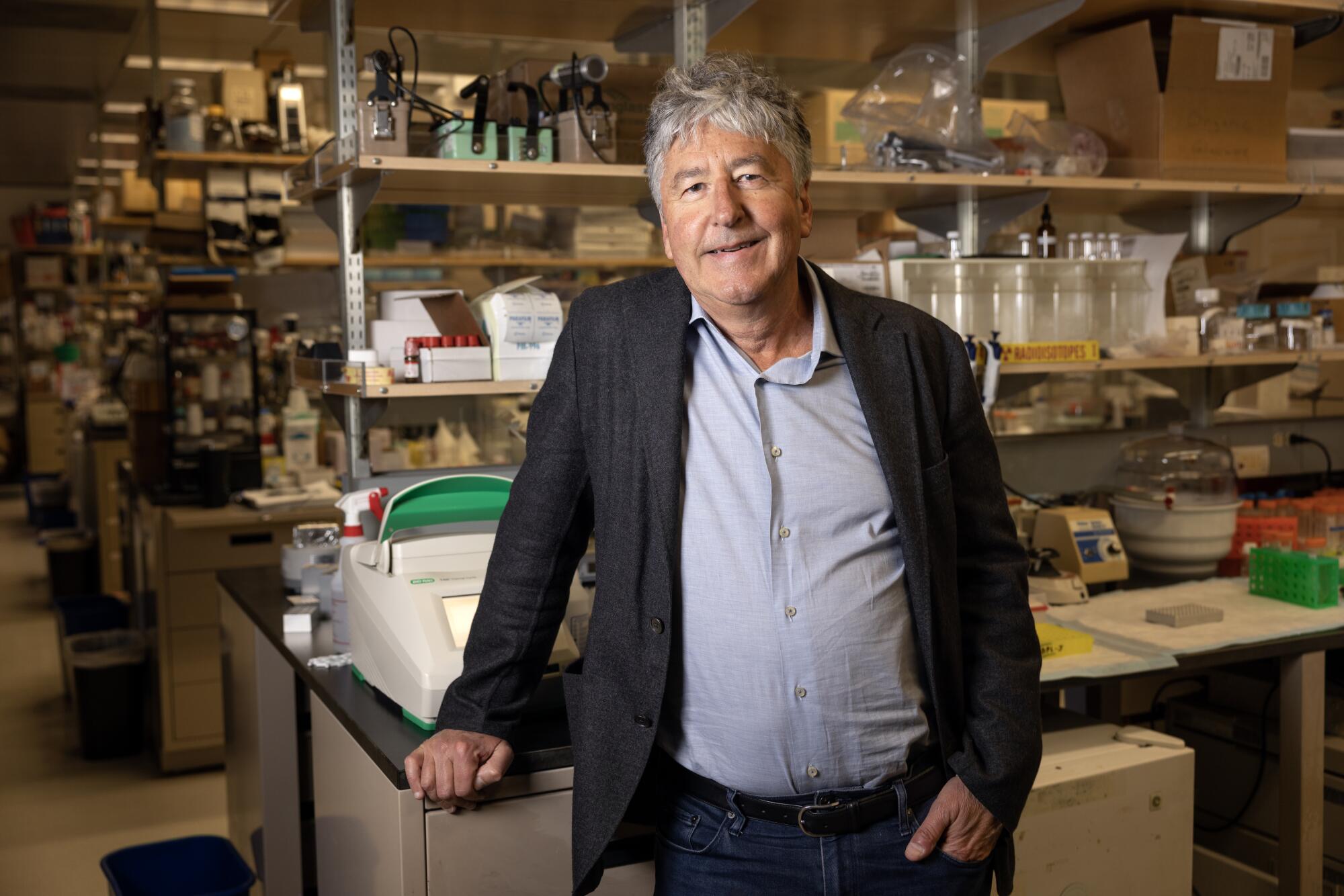
The private institute “is going to do what Salk does best, which is make fundamental discoveries that are absolutely relevant to what will become medicines that address unmet medical needs,” said Joyce, who is such a “Salkie” that he married his wife, psychiatrist Nancy McTigue, in the center’s courtyard.
Joyce is a so-called mud-fud. He has both a medical degree and a PhD, both of which he earned at UC San Diego. He then became a researcher at the Salk, working under Leslie Orgel, who shook science by proposing that all life on Earth initially arose from RNA rather than DNA or proteins. The hypothesis is now widely accepted in science.
Joyce subsequently moved to Scripps Research in La Jolla, where he conducted research and served as dean of the faculty. Then he spent seven years overseeing drug discovery at the Genomics Institute of the Novartis Research Foundation in La Jolla. He returned to the Salk in 2017. He’ll assume the presidency in April.
His research has focused on the origins of life and evolution, chiefly through the study of RNA, which scientists believe came into existence before DNA and proteins.
“It’s the ancestral molecule of life,” Joyce said Friday, broadly smiling at the grandness of it all.
This work led Joyce to propose a working definition of life that is widely used by NASA: “Life is a self-sustaining system capable of Darwinian evolution.”
Exploring how RNA factors into life and evolution has led to life-saving advances. Moderna and Pfizer-BioNTech used so-called messengerRNA to create COVID-19 vaccines. Related research led to a drug to fight high LDL, the “bad cholesterol” that can result in a heart attack or stroke.
Sciences are increasingly targeting RNA itself in ways that might help in the battle against cancer, a family of diseases that killed more than 600,000 people in the U.S. in 2020.
Joyce’s return to the Salk in 2017 came during one of the worst periods in the institute’s history.
Three female scientists filed lawsuits, alleging that they were subjected to gender discrimination. Nobel laureate Elizabeth Blackburn, who was then president of the Salk, took the highly unusual step of publicly raising questions about the quality and quantity of the work done by two of the women. Many top scientists sharply criticized her for the move, including Carol Greider, who shared the 2009 Nobel Prize in physiology or medicine with Blackburn.
The three women settled out of court, and Blackburn announced that she would retire much earlier than expected. Ted Waitt also stepped down as chair of the board of trustees, for reasons that weren’t entirely clear, raising more questions about Salk’s leadership.
During that time period, the institute publicly said it was doing well financially. But the Union-Tribune obtained private Salk documents that said it was facing “daunting” money problems.
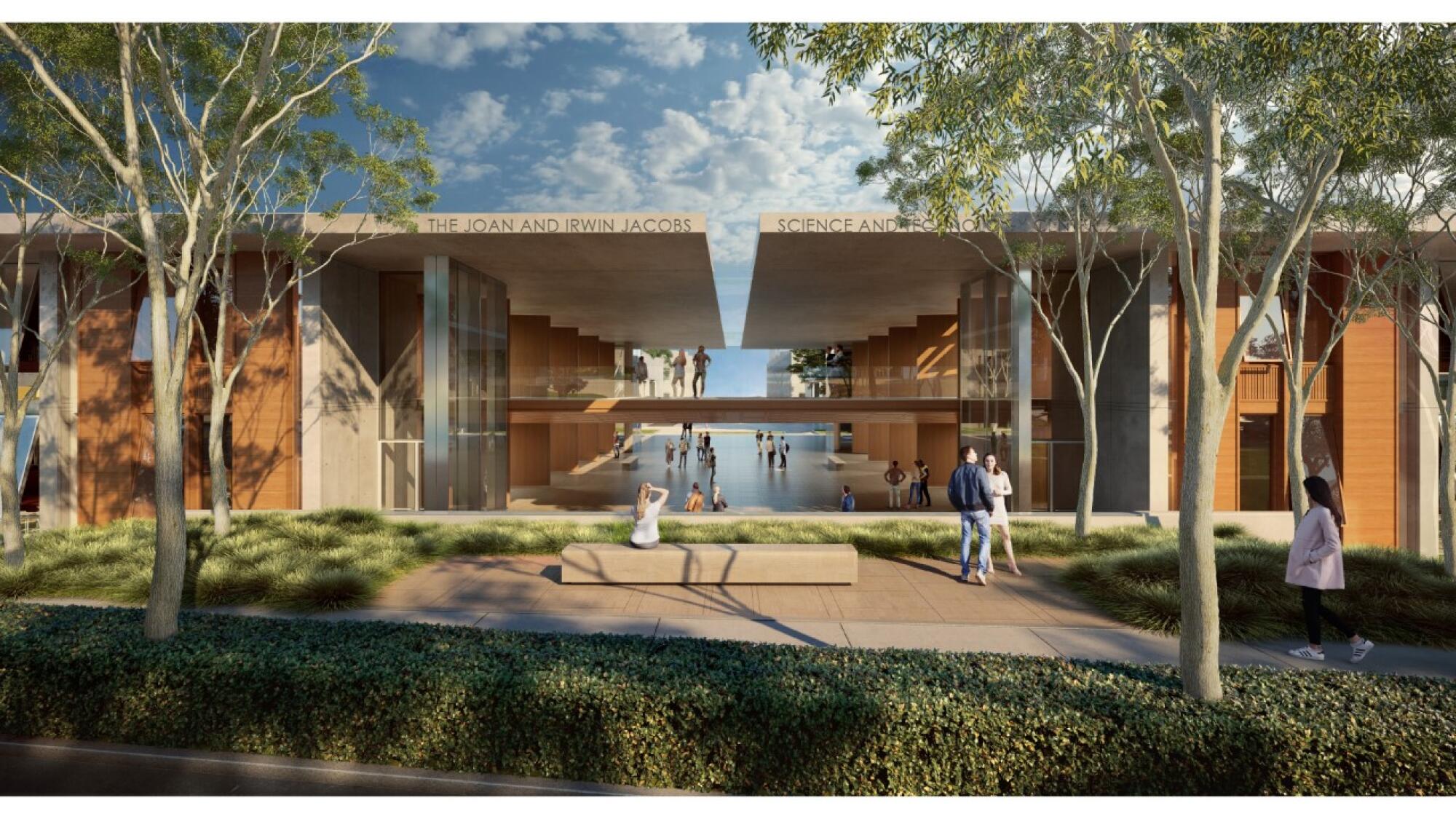
The document also said the institute had explored whether it would alter its official name if a private donor was willing to make a contribution of more than $1 billion. The Salk later said that the idea was only something tossed out during brainstorming sessions and wasn’t seriously considered.
Gage, who famously helped prove that adult humans can generate new brain cells, was named president and asked to put the institute back on course.
He’s been widely praised for his work, especially raising money. In 2020, Amazon founder Jeff Bezos gave the Salk $30 million to help scientists explore ways to get plants to store more carbon in the ground as a way of fighting climate change.
The following year, Jacobs announced that he would give up to $100 million in matching funds to help build the science and technology center. Construction is expected to begin in spring 2024.
“The Salk brings in roughly $100 million a year in philanthropy,” Joyce said. “In the current fiscal year, we’re going to [end up] way above that number.”
The Salk’s decision to put him in charge is receiving positive reviews from colleagues and competitors, including David Brenner, chief executive officer of the Sanford Burnham Prebys Medical Discovery Institute in La Jolla.
“He’s an accomplished scientist who’s been at multiple institutions and really understands how to collaborate in ways that advances human health,” Brenner said. “He’s a next-generation leader. This is good for San Diego.”
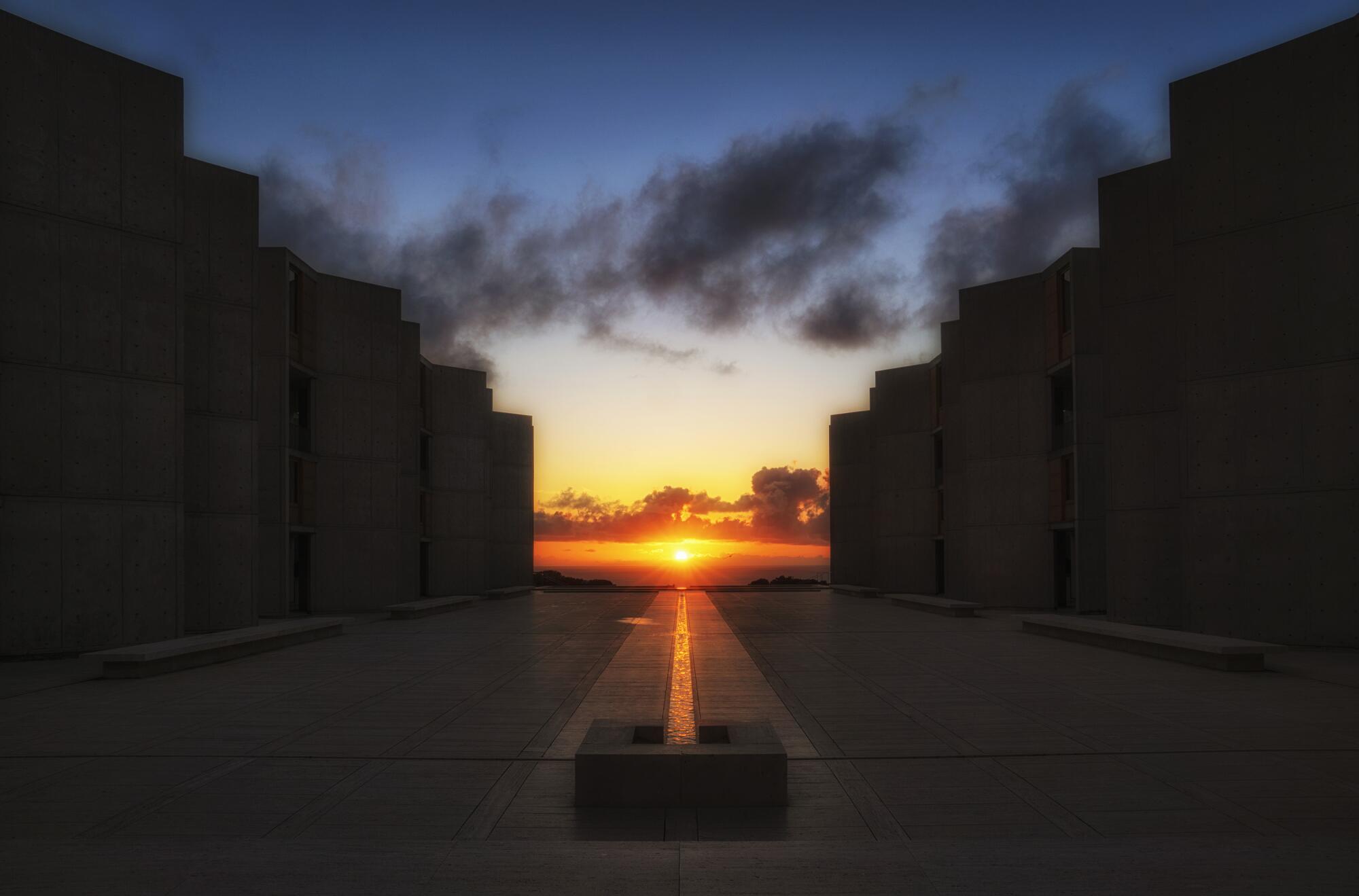
More to Read
Sign up for Essential California
The most important California stories and recommendations in your inbox every morning.
You may occasionally receive promotional content from the Los Angeles Times.






